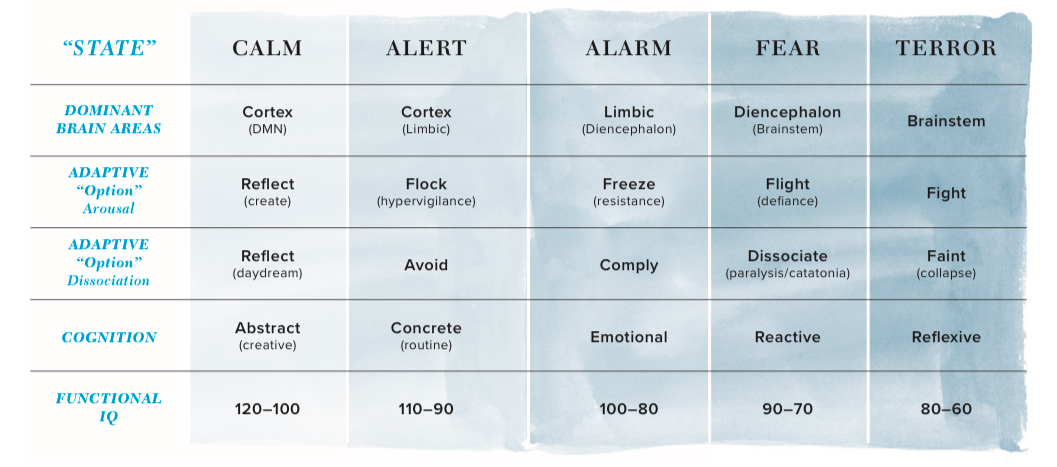Neurosequential Model Series Part 2 - Short-Term Reactions to Stress and Trauma
Reviewing our last post, the brain can be simplified into four regions: the brainstem, the midbrain, the limbic system, and the cortex. The brain develops sequentially, from the bottom up, from before birth to age 25, starting with the brainstem and ending with the cortex. The functioning of each region gets more complex as the brain develops; lower areas of the brain control basic physiological functioning, while upper regions control more complicated emotional and cognitive tasks.
Our brain functions hierarchically. When we feel safe and social, we can access all four regions of our brain, do our most complex thinking, engage in creative endeavors, and practice becoming the best version of ourselves. However, when our brain senses danger, our functioning shifts into regions that are responsible for mobilization and survival, and as a result, our cognitive functioning declines as things get more and more scary.
Let’s break down this graphic from the book What Happened to You?: Conversations on Trauma, Resilience, and Healing by Dr. Bruce Perry and Oprah Winfrey. Ideally, we exist in the world with a sense of safety, which allows us to feel calm. When this happens, we are able to access all parts of our brain, including our cortex, which does all of those cognitive functions. As a result, we are at our most intelligent and are able to engage in complex, abstract thought. Of course, life happens, and it's impossible to exist in a state of calm all the time, so our brain needs other options for when we’re sensing danger and/or a lack of safety.
When we get sensory information (sights, sounds, smells, sensations) that is novel (new), unexpected, or questionable, we become alert. While our cortex is still the most dominant brain region, our limbic system is ready and waiting to be activated in case what we’ve noticed is unsafe and we need to fight or flee. Our thinking becomes more concrete, and our functional IQ drops nearly 10%. If the stimulus is interpreted as a threat, our brain enters an alarm state, where our cortex becomes unavailable to us, and instead we function from our limbic system and midbrain. When that happens, we think emotionally rather than logically, and our functional IQ drops even more.
If that stimulus becomes apparent as a bigger threat, we enter a fear state and are ready to flee or dissociate. We are no longer able to access our limbic system and we experience a lack of emotions, we react impulsively, and our functional IQ drops further. When we experience terror due to a life threat, our brainstem is the only part of our brain that’s online. We are acting reflexively and instantaneously without awareness, sometimes fighting, or maybe even collapsing by fainting and playing dead, to try to survive. By the time you reach the terror state, your functional IQ has dropped 40 points.
While it may seem bleak or scary to think about how your capacity drops under stress, remember: these changes are so adaptive! We don’t need to think about abstract concepts like how gravity works if we are dealing with a life threat like fleeing from a bear. Quite the opposite, in fact; being careful, measured, and thoughtful with each second-to-second decision would likely slow you down so much that you would not survive.
This shift in our brain functioning based on safety plays an important role not just in the present, but also in the future. If you didn’t feel safe in the past and operated in an alarm state most of the time, your cortex was probably underutilized and your limbic system was activated all the time, creating some very robust neural networks there. If you lived in a situation where you frequently experienced fear, even the limbic system is going to be underutilized and therefore could be underdeveloped. We call this idea use dependence; neural connections, and the subsequent brain regions that house them, become more robust with repeated use and less neurologically dense without use. When we start to shift into the long term impacts of trauma, which I’ll cover in depth in our next post of the series, we’ll start to learn more about how being in these states of activation, particularly in childhood, can create long term impacts on neurological functioning.
